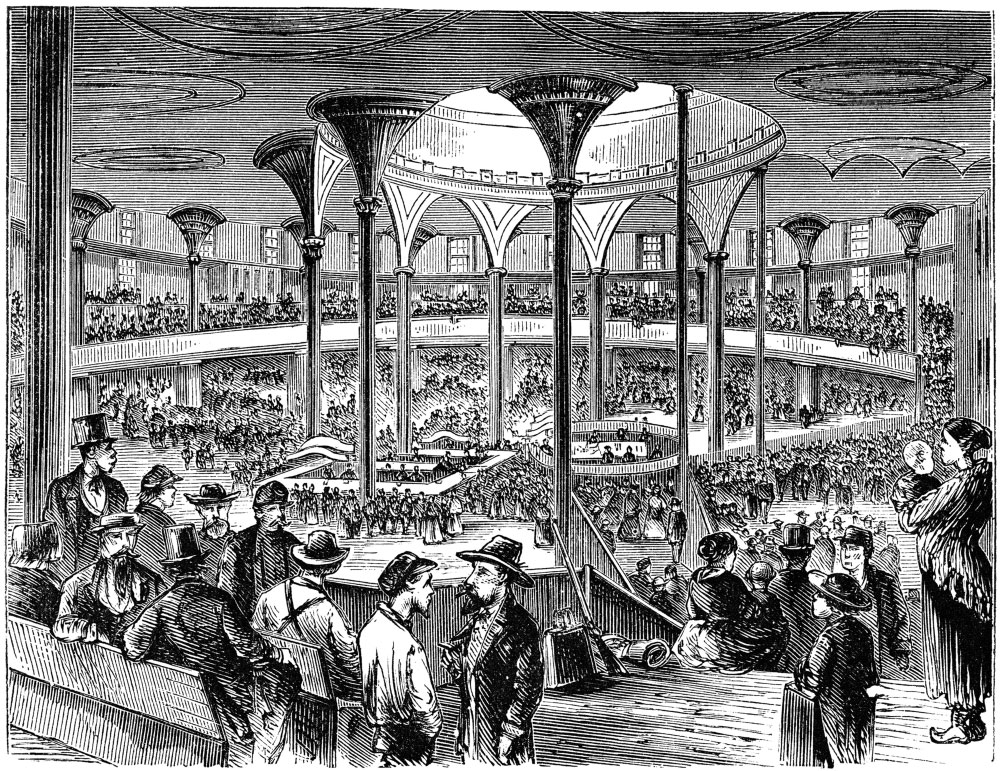What was the world like when great-grandpa started his new life in the new world? I reread the wonderful Time and Again novel by Jack Finney, which takes place (partly) in the NYC of 1882, for a taste of the ordinary person's day.
- He was part of a huge influx. The decade of the 1880s brought massive waves of immigration from Eastern Europe, in particular. Meyer was one of many Jews who flocked to America (especially New York) seeking work, as well as to avoid conscription and deadly persecution. Meyer didn't speak English when he arrived, but he said he could speak (not read or write) by the time of the 1900 Census. Not a problem: Many people in the tenements spoke his native language and his children (even the two born in Latvia) learned English very quickly in public school; they must have served as interpreters for their parents on many occasions.
- The big city was getting bigger and busier. The Brooklyn Bridge (above) was only 2 years old when Meyer arrived, a triumph of engineering. A year after Meyer arrived, the Statue of Liberty would be dedicated. Elevated railways (with steam locomotives) were being expanded in Manhattan, but underground subways were still years in the future. Meyer and his family almost certainly walked everywhere, dodging horse-drawn conveyances (and detritus) all the way. It was noisy, dirty, and crowded. But he was his own man, and his family had new opportunities not available in the old country.
- Tenement life was tough. In the early years, great-grandpa and his family lived in Lower East Side tenement apartments (later moving to 105th Street in Manhattan, a much better neighborhood). Until the turn of the century, many tenements had outhouses, and electricity and gas were almost luxuries.
- Inventions? So what? Meyer was too poor (and too early) for the phonograph, the telephone, the automobile, Coca-Cola. Radio wasn't even a thought experiment yet. If he was lucky, he had an ice box and replenished the ice regularly. But one invention important to Meyer and family was the photograph. Like many immigrants, he had family portraits made for a few special occasions.
- Long, hard work week. Meyer was a tailor and most likely worked six days a week in a small sweatshop, possibly in the front room of a tenement flat, cutting and sewing by daylight when available and candlelight when necessary. Sewing machines were available, and he probably knew how to use one (but didn't own his own, at least at first). My cousin Lois inherited his tailoring tools, including his fabric shears! During the 1880s, the US labor movement gained momentum as workers fought for better conditions. Although Meyer would have known about unionization, he was unlikely to have been a union member, at least in the early years.
- Meyer wanted to live in a major city. Meyer saw New York as a place where he could practice his religion and be sure his children married within the faith. His oldest son (born in Latvia) never married but his oldest daughter (also born in Latvia) married in 1906, and she was my grandma. Just four years later, Meyer died of cancer. His widow Tillie outlived him by more than 40 years.


This sounds like a book I would really enjoy, I'll have to check it out. My husband's family also immigrated during this time and it will be interesting to look back at a snapshot of the world they saw.
ReplyDeleteHeather, I've read and reread Time and Again, and enjoyed it each time, even knowing what happens in the end. (I won't spoil it for you!) So glad you stopped by.
ReplyDelete